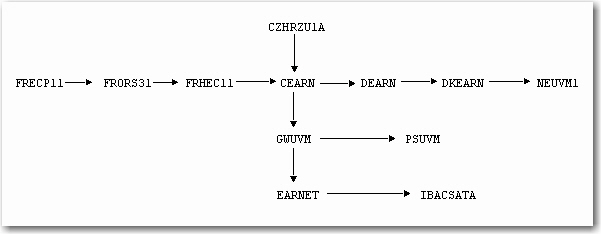9.1 Relayed File Distribution
Relayed File Distribution is a service provided by the ever-growing network of L-Soft LISTSERV servers to all users connected to the Internet who are allowed to send and receive files or messages. (The origins of the service were on BITNET and associated services where it was possible to send files, as opposed to messages.) The user desiring to send the message (whom we will call the 'sender') provides his nearest L-Soft LISTSERV host with a copy of the message to be distributed and the list of persons who are to receive it. He can optionally indicate the full name of these persons as well as his own full name, and they will be used in information messages and mail headers as appropriate. The LISTSERV hosts will then relay the file to each other as explained below and distribute the file to all the indicated recipients in the most efficient way they could 'manage'.
The server that initially receives the file from the sender will first distribute the file to the (possible) recipients of its local node, which does not generate any network traffic. It will then examine the list of non-local recipients and determine, for each of them, which of the L-Soft LISTSERV servers is nearest.1 Whenever it finds itself to be the nearest server, it distributes the file directly, and removes the recipient from the list. It then uses a rather complex algorithm to "route" the remaining recipients through its nearest servers, and transmits the request to them. This will be best illustrated by an example.
User X@FRECP11 sends a file distribution request for the following list of people:
Y@FRECP11,X@CEARN,Y@CEARN,X@CZHRZU1A,X@NEUVM1,X@IBACSATA, X@EARNET, X@PSUVM
We will assume that a L-Soft LISTSERV server has been installed at the following sites: FRECP11, CEARN, DEARN, DKEARN, EARNET
Finally we will assume the following topology, which will not necessarily reflect the actual network topology at the time you read this chapter (it has been simplified and nodes which do not participate in the transfer have been removed):

The file is distributed by LISTSERV@FRECP11 to Y@FRECP11, and then forwarded to LISTSERV@CEARN, which will distribute to the two CEARN recipients and to X@CZHRZU1A. LISTSERV@CEARN then forwards one copy of the file to LISTSERV@DEARN and one to LISTSERV@EARNET, with the appropriate list of recipients. LISTSERV@EARNET distributes to the EARNET recipient and to X@IBACSATA. LISTSERV@DEARN distributes to X@PSUVM, and also to X@NEUVM1. LISTSERV@DKEARN does not receive anything because it would have served only a unique recipient, and in that case a direct send can only be better.
The file has therefore crossed a total of 11 links. If it had been sent the normal way from FRECP11, it would have had to cross 32 links, i.e. thrice more. The reduction is very important because we assumed that a server is installed at all the central nodes in the network, which is not necessarily the case in practice.
1 In LISTSERV Classic only, DISTRIBUTE Jobs sent to LISTSERV Lite servers are handled exclusively by the local server and the DISTRIBUTE backbone is not employed.
